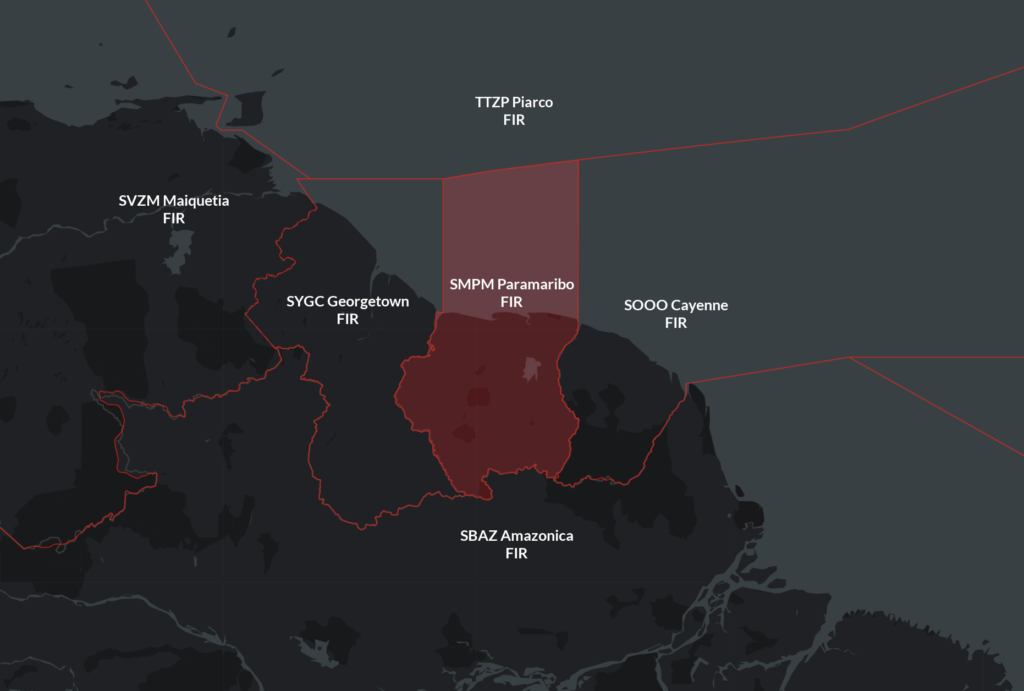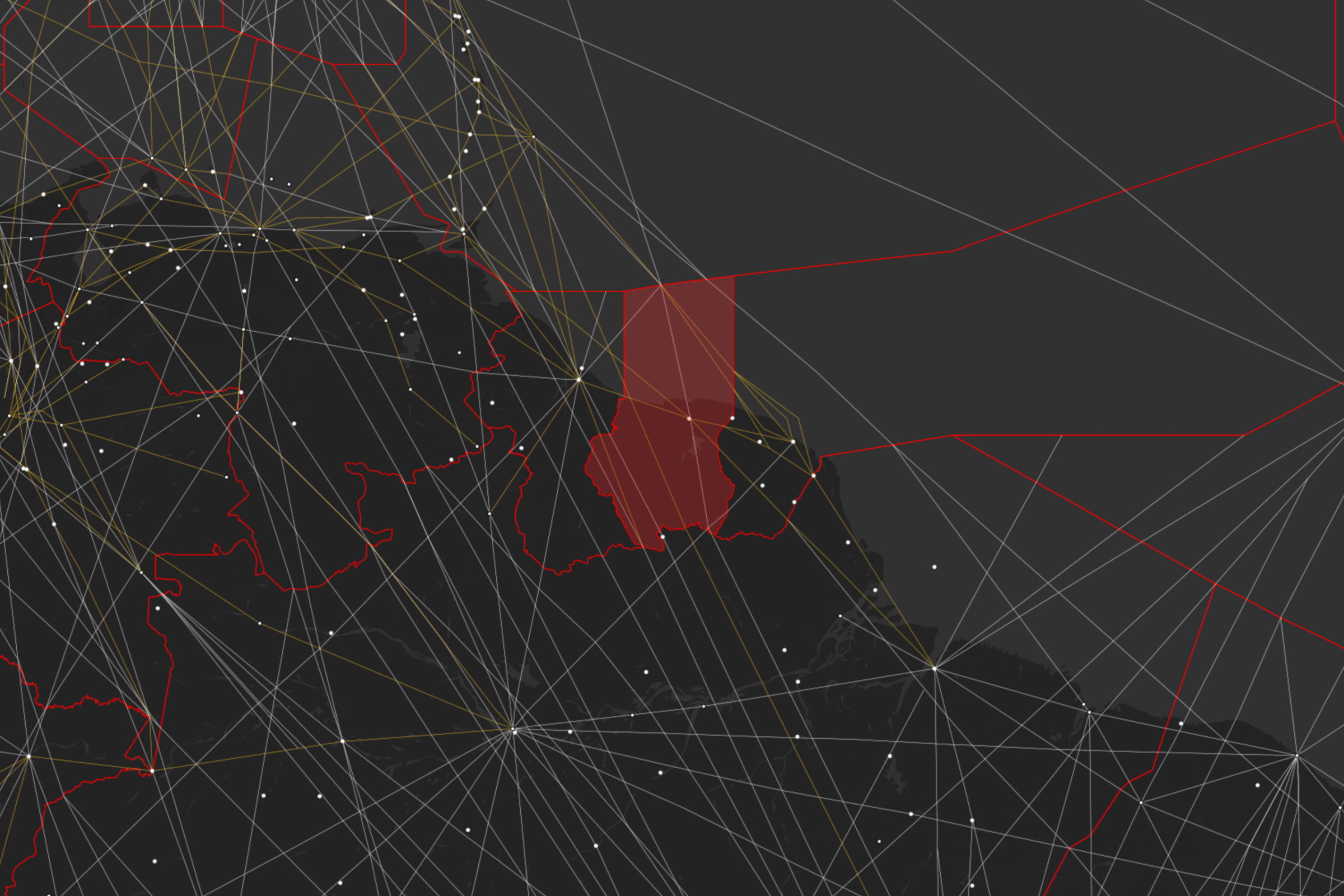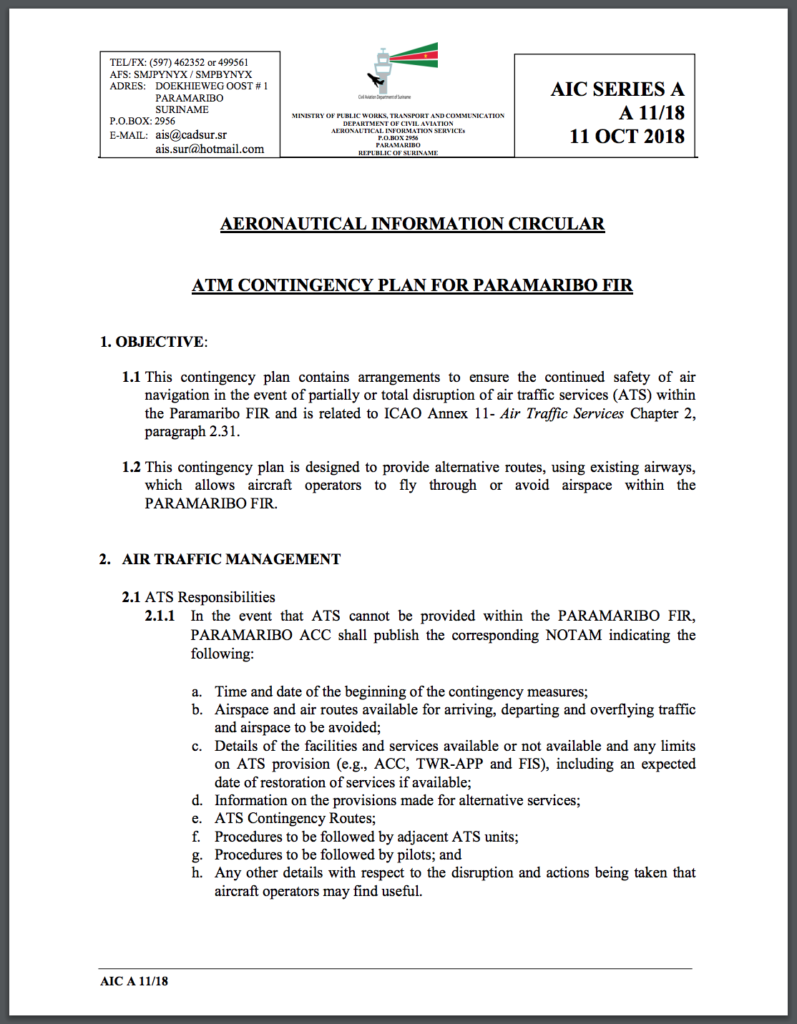Watch out if planning to overfly the SMPM/Paramaribo FIR this week – there’s an ATC strike happening each night between 0100-1100z, finishing at 1100z on June 4.
Each night, the airspace will effectively be uncontrolled with Contingency Procedures in place:
- Neighboring ACCs will be controlling the airspace
- Only certain routes are available
- No speed/level changes are allowed.
- Only medevac and emergency flights will receive any air traffic services.
Here’s the Notam:
SMPM PARAMARIBO (ACC) A0063/21 - DUE TO INDUSTRIAL STRIKE NO ATC SERVICE AVBL ATM CONTINGENCY PLAN FOR PARAMARIBO FIR ACT ONLY MED AND EMERG FLT WILL REC ATS. DAILY 0100-1100, 29 MAY 01:00 2021 UNTIL 04 JUN 11:00 2021. CREATED: 27 MAY 23:01 2021
Here’s where we’re talking about:
 Procedures for the neighbouring ACCs:
Procedures for the neighbouring ACCs:
a. Transmit Flight Plan messages to Paramaribo ACC through AMHS.
b. Authorize entrance into Paramaribo FIR, in agreement with the longitudinal separation established in this Contingency Plan.
c. Do not authorize any Flight Level or speed (Mach number, if applicable) change in the 10 minutes prior to the aircraft entrance into Paramaribo FIR.
d. Instruct pilots to keep the last assigned Flight Level and Mach number while over-flying Paramaribo FIR.
e. Instruct pilots to contact the adjacent ACC as soon as possible and at least 10 minutes before the estimated times over exit point of Paramaribo FIR.
Pilot and operator procedures:
a. Pilots shall include in the last position report to the competent adjacent ACC the estimated times over entry and exit points of the PARAMARIBO FIR.
b. Aircraft are to operate as close as possible to the centreline of the assigned contingency route.
c. contact the competent ACC as soon as possible and at least 15 minutes before the estimated times over exit point of PARAMARIBO FIR.
d. Keep navigation and anti-collision lights continually on while PARAMARIBO FIR is being overflown.
e. Maintain the flight level and the Mach number assigned by the competent adjacent ACC while operating within PARMARIBO FIR, unless for emergency or flight safety reasons.
f. Pilots need to continuously guard the VHF emergency frequency 121.5 MHz and should operate their transponder at all times during flight.
g. Transponders should be set on a discrete code assigned by the adjacent stations of PARAMARIBO ACC or select code 2000.
h. whenever emergencies and/or flight safety reasons make it impossible to maintain the flight level assigned for the transit through the PARAMARIBO FIR;
- The pilot shall immediately inform all other aircraft of the emergency, eventually level change, using blind transmissions on emergency frequency 121.500 MHz and on pilots’ air to air frequency 123.450 MHz.
- Broadcast every position and intention on emergency frequency 121.500 MHz and on pilots’ air to air frequency 123.450 MHz.
To check which routes are available, check out the Contingency Plan in full here:
If you need to contact the authorities in Paramaribo, here are their details:
Paramaribo ACC
E-mail: pengelacc@gmail.com and radha_atwaroe@hotmail.com
TEL: 00597-325203 or 00597-8555025
International NOTAM office
E-mail: ais.sur@hotmail.com and ais@cadsur.sr
TEL: 00597-462352 or 00597-499561
More on the topic:
- More: French ATC Strike: Sep 18
- More: The Curious Case of the Bonus French ATC Strike
- More: What’s Suriname?
- More: Africa ATC Strike
- More: Morocco ATC Strike Cancelled!
More reading:
- Latest: Mexico Customs Surprises: Pills, Vapes, and Laptop Rules
- Latest: Greenland NAT Alternates: Dec 2025 Update
- Latest: Crossing the Quiet South: From Australia to Argentina
- Safe Airspace: Risk Database
- Weekly Ops Bulletin: Subscribe
- Membership plans: Why join OPSGROUP?












 Get the famous weekly
Get the famous weekly 





